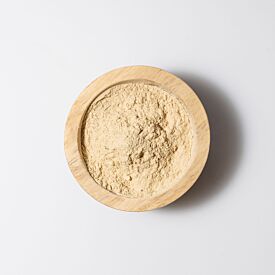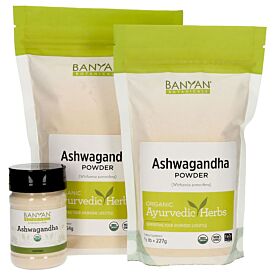How to Have Abundant Energy
We live in a society that places a tremendous amount of value on a very active, mobile, and productive type of energy, which leads to continuous cultivation of personal and societal busy-ness.
So often, when we think of what our lives would look like if we had more “energy,” the life we imagine wouldn’t necessarily serve to improve our sense of well-being at all.
In fact, in many cases, living our imagined high-energy lifestyle would actually increase stress, foster anxious feelings, deplete ojas (the subtle essence of strength, vigor, and vitality), and leave us feeling ragged.
Ayurveda offers many paths toward improved vitality in our bodies—ones that will serve our long-term health.
Instead of magnifying our capacity to exhaust and deplete our systems, Ayurveda recommends developing and nurturing a more balanced relationship with energy.
The Ayurvedic approach to increasing energy involves:
- Honing a natural sense of inner alignment to feel more alive and inspired.
- Honoring our bodies while listening to, trusting, and following our hearts.
- Learning to refine our diets, our practices, and our very way of life to more fully support the whole of who we are.
- Living in harmony with the seasons and the broader cycles of nature.
The journey may also surprise you. You may find yourself wanting to be more intentional about where you spend your newfound energy.
Not all forms of energy are equal, so let's start at the beginning—by taking a closer look at what it means to have energy and vitality, and how Ayurveda can help you maintain both.
Cultural Influences on How We View Energy
energy. The ability to be active: the physical or mental strength that allows you to do things; natural enthusiasm and effort.1
vitality. A lively or energetic quality; the power or ability of something to continue to live, be successful.2
The above definitions say a great deal about these forces in our lives; energy should be a “natural” source of enthusiasm and effort, and vitality should not only energize our lives, but also empower us to be successful.
If you are trying to increase your energy levels, it’s likely that you try to pack your schedule full of activities, only to find yourself feeling exhausted or tired all the time. Our culture is undoubtedly quite enamored with this "high-energy" lifestyle—which we’ll call "the way of the go-getters."
Go-getters have a seemingly endless capacity for doing. They pack their days from morning till night—and they thrive on this type of activity!
For the rest of us, we’re left wishing we had that kind of stamina and focus.
We reach for caffeine, an energy drink, more exercise, the perfect supplement, or (insert your fix here), and we set off in search of that elusive abundance of energy that we all know must be out there for us somewhere.
Thankfully, there’s another lifestyle—which we'll call "the way of the quiet masters." This approach is a divergence from our cultural desire for a fast-paced, high-energy way of living.
Quiet masters lead lives full of purpose and meaning, but they do not seem especially busy. By contrast, they don’t seem to waste any of their precious energy on trivial concerns and are very careful about where they place their focus and attention.
They exude presence, groundedness, awareness, and clarity. Often, they are also highly spiritually attuned, insightful, and inspiring to be around.
Fortunately, everyone can be a quiet master, even if they've been caught up in the pace of the culture, by approaching their days in a carefully paced, intentional manner, and embracing a strong commitment to self-care and nourishment.
What Your Body Is Telling You When It's Fatigued
All too often, when we strive for a life of uninterrupted doing, sooner or later, our bodies quietly (or not so quietly) become exhausted, depleted, feeble, and fragile. What if your own lack of energy was actually a message from your body? Is it possible that your body is trying to tell you something?
Maybe it's saying, “Hey, this all-out sprint that you’re up to isn’t actually working for me” or “you know, I’m pretty tired… how about balancing your insanely active lifestyle with some solid rest and relaxation?”
But finding someone who is heeding these gentle appeals from the body is surprisingly rare. Most of us are not listening all that carefully, and more often than not, we miss these subtle messages altogether. Instead, we typically wait until our bodies are in crisis, and only then do we think about slowing down (usually quite reluctantly).
A Balanced Approach to Increasing Energy
Choosing a path that fosters true, natural vitality is a most courageous act. It means becoming a quiet master of your own energy, your life force. And despite the natural appeal and charisma of the masters who have gone before us, there is really surprisingly little cultural support for this way of being in the world.
Learning how to have more energy Ayurvedically requires us to go against the grain—to swim upstream. Therefore, creating a support system for yourself can be invaluable. Have a designated team in place so that, when the going gets tough, they can remind you of your intentions—and that they are good ones.
Thankfully, blazing your own trail gets easier with time, and the rewards are great, which generally helps reinforce one’s resolve to stick with it.
Energy, Vitality, and Ayurveda
In Ayurveda, there are four key principles that are direct physiological manifestations of energy and vitality. Getting to know these Ayurvedic concepts tends to shed a great deal of light on the process of mastering our life force energy.
These four principles are:
- Ojas. Ojas is the super-fine essence of kapha dosha and of all seven bodily tissues; it is the primary source of vitality, strength, and immunity in the body.
- Agni. Agni is the sacred metabolic fire that provides energy to the body and mind—on both gross and subtle levels.
- Tejas. Tejas is the super-fine essence of agni and of pitta dosha that transforms matter into energy and consciousness.
- Prana. Prana is the vital breath, or life force energy that animates each of us with life; it is also the super-fine essence of vata dosha.
As you read more about ojas, agni, tejas, and prana below, pay attention to where you are most inspired (and also to where you feel any resistance); these are likely powerful clues as to where it would best serve you to begin discovering how to have more energy and increased vitality for yourself.
Ojas: Protect it to Build Energy and Motivation
Ojas is an elusive, mysterious substance in the body that is essential to life. Ojas is intimately connected to kapha dosha, agni, the process of tissue nutrition, and the heart—so each of these things wields a meaningful influence on our vitality.
Our quality of life can deplete ojas. For example, ojas is dried up by trauma, stress, unhealthy relationships, and poor lifestyle choices.
On the other hand, ojas is buoyed by nourishing life experiences, happiness, joy, healthy relationships, wholesome lifestyle choices, living in the present moment, and cultivating purposeful awareness whenever possible.
Ojas-Protecting Tips for Energy
- Prioritize a Balanced Sleep Routine. Balanced sleep is critical to protecting the quality of ojas and can have a huge impact on our overall vitality. Sleep has considerable restorative functions and plays an important role in the repair and rejuvenation of tissues. It also allows for the more efficient removal of metabolic wastes and natural toxins.3
- Consider a Period of Rejuvenation. Ayurvedic rejuvenation or rasayana can be a wonderful way to build and protect ojas. In essence, the idea is to nourish yourself deeply—on all levels—for a designated period of time. Strategies typically follow a period of cleansing and can include dietary changes, specific lifestyle choices, the use of rejuvenative herbs, or a combination of all three.
- Support Ojas By Tending to Your Immune Health. Ojas and immunity are intimately connected, so building a healthy immune system through supportive herbs, foods, and lifestyle choices can also serve to strengthen ojas.
- Support the Heart Center. There is a critical connection between ojas, the mind, the heart, and the subtle channels of the energetic body. Also, the most refined form of ojas resides exclusively within the heart, so supporting the heart center can help nourish and protect ojas.
As the end product of digestion and tissue nutrition, the quality of ojas is directly linked to the quality of agni, making the following recommendations for agni relevant to the health of ojas as well.
Agni: Make the Most of How the Body Spends Its Precious Energy
Like ojas, agni is absolutely essential to life. Not only is it responsible for digestion, absorption, and assimilation (of foods, thoughts, emotions, and experiences), it also governs all transformative processes in the body, ignites the light of awareness and intelligence in our consciousness, and serves as a bridge between matter and energy.
Agni plays a central role in our overall vitality, so kindling and protecting your agni is a sure-fire means of improving your energy levels—from the inside out.
Agni-Tending Tips for Energy
- Kindle Agni with a Supportive Diet. In general, it is best to follow an Ayurvedic diet that favors simple, whole, organic foods that are in season and freshly prepared.
- Eat for Your Dosha. Your prakriti (constitution) and vikriti (your current state of balance) may also indicate a more specific dosha-balancing diet. Determine your dosha to see if your diet should be more focused toward balancing vata, pitta, kapha, or a combination.
- Pay Attention to Food Combinations. Proper food combining can also be a powerful support to agni.
- Give Your Meals Your Full Attention. In Ayurveda, eating is considered a sacred act, an act of love. Ideally, it is done in a calm, peaceful atmosphere and it is given our full, undivided attention. It is best to avoid eating on the go, or while distracted by intense conversations, television, or multitasking.
- Enjoy Your Food. It is equally important to eat slowly, chew thoroughly, and fully appreciate the textures and flavors of your food. Taking the time to resonate with your meal in this way can have a profound impact on your ability to digest it—even if what you are eating isn’t the healthiest choice.
- Eat When You’re Hungry. Leave adequate space between meals to ensure proper digestion, make lunch our main meal whenever possible, and avoid preparing or eating food when there is intense emotional disturbance.
- Don’t Overeat. Listen to your body in order to avoid overeating; in fact, try to stop before you feel full.
- Consider a Cleanse. An Ayurvedic cleanse is a powerful way to kindle and reset agni. The basic premise of a cleanse is that our bodies are inherently intelligent. When we provide a break from the barrage of potentially harmful inputs, they immediately allocate the extra energy to repairing the system for optimal performance. Cleansing gives the physiology a chance to detox and rejuvenate the tissues while supporting agni.
Tejas: Enliven It to Support Agni
Tejas is the expression of solar energy in the body. It is the positive subtle essence of both agni and pitta dosha, and it governs intelligence, discernment, enthusiasm, as well as digestion and transformation.
Tejas also works closely with prana and ojas to maintain the essential energies needed to support life.
Because tejas is the subtle essence of agni, kindling and protecting agni will generally support tejas. Please see the recommendations for tending to agni, above.
Prana: Harness Your Vital Energy
The words “energy” and “prana” are nearly synonymous, but the Sanskrit word prana is richly meaningful.
Prana is the vital life force within each of us. It is carried on and stimulated by the breath, but it is not the breath. The foods we eat and the water we drink also contain prana and serve to replenish our own.4
In this way, ingesting foods and drinks that are healthy, fresh, and full of prana themselves serves to nourish this vital force within our bodies—as does purposeful, mindful breathing.
As the subtle essence of vata, prana likes to move. In fact, it nourishes our vitality best when it remains fluid and unobstructed.
As a result, prana is greatly supported by practices that help eliminate and protect against stagnation, many of which also serve to enrich the tissues with an influx of fresh prana.

Prana-Nourishing Tips for Energy
- Yoga. Yoga moves prana, helps dissipate tension, clears stagnation, and encourages fluidity throughout the tissues. Depending on your current state of balance, you can tailor your practice to balance vata, pitta, or kapha, and practice flows such as Sun Salutations (which are heating) and Moon Salutations (which are cooling).
- Pranayama. The practice of specific pranayamas (yogic breathing exercises) can help restore fluidity and vitality to the subtle energy channels of the body, release tension, and support the mind and nervous system. If you are new to pranayama, start with Full Yogic Breath. Once you feel comfortable, consider working with Nadi Shodhana pranayama (alternate nostril breathing) to more specifically promote balance in prana vaha srotas (the channel system that moves prana through the body).
What Energy Depletion Might Look Like for Each Dosha
When vata, pitta, or kapha are out of balance in our systems, they can wreak havoc on agni, prana, tejas, and ojas.
- Vata. Signs of imbalanced vata may include feeling overwhelmed, lightheaded, and fatigued. For increased energy, balance vata through lifestyle and dietary choices that introduce warmth, groundedness, and stability.
- Pitta. Pitta imbalances can come from pitta's natural tendency to try to do it all. They can take on too much, and, when trying to keep up, they become depleted and worn out. Learning to surrender and practicing moderation are key to balancing pitta.
- Kapha. Kapha is slow and static by nature, and when out of balance, it can manifest as lethargy and sluggishness, making it hard to get motivated. Balancing kapha through incorporating invigorating, stimulating foods and lifestyle choices into your daily routine could help you feel more energized and motivated throughout your day.
If you want to learn more about your own doshas, take the dosha quiz, which can help you determine which of your doshas (if any) need the most attention and will direct you to resources specifically geared toward helping you restore balance.
Additional Ayurvedic Tips for More Energy
What follows are more generalized tips that can help you increase and sustain your energy levels while supporting your overall health.
- Reduce and manage stress in your day-to-day life
- Follow a daily routine, which is one of the cornerstones of an Ayurvedic lifestyle
- Implement seasonal routines to align your lifestyle with the current season
Herbal Support for Increased Energy
Balancing the demands of work, family, and a healthy, active lifestyle can be challenging, even for those of us who strive to follow the principles of Ayurveda. Thankfully, Ayurveda offers many useful herbal allies:
- Ashwagandha. As a highly regarded adaptogen, ashwagandha promotes energy throughout the day and sound sleep at night, promoting natural vitality. It has long been celebrated for its ability to support the body in coping with stress while calming the mind. From herbal oils to tablets, balms, and our Ashwagandha Latte, you can find ashwagandha in a variety of products. Ashwagandha tablets, liquid extract, and powder are available.
- 7-Herb Energy. Formulated to support the Banyan team through times of stress, 7-Herb Energy is an herbal blend that nourishes prana and offers a natural source of balanced energy and alertness without caffeine. Instead, this formula relies on the powerful herbal allies of the Ayurvedic tradition alongside two different forms of ginseng to foster a boost of natural energy.
- Chyavanprash. A traditional Ayurvedic herbal jam made in a base of amalaki fruit, Chyavanprash is highly rejuvenative, kindles agni without aggravating pitta, and helps clear excess heat from the system. A daily dose of this nutritive jam can support improved emotional stability, energy, vitality, and overall well-being.
For more ideas, we encourage you to browse our Ayurvedic herbs for energy.
Prioritize Appropriate Exercise
When engaged appropriately, exercise can be a panacea for improved health and vitality. Proper exercise helps improve circulation, release accumulated tension, and move stagnant mental and emotional energy.
It also kindles agni, improves digestion, bolsters the body’s detoxification mechanisms, encourages proper elimination, promotes relaxation, protects ojas, and encourages sound sleep—all of which, of course, serve to improve energy and vitality.
Ayurveda offers the unique perspective that the type, duration, and intensity of exercise that is most supportive for each of us depends largely on who we are as individuals.
In general, Ayurveda suggests that we exercise to only about fifty percent of our capacity—until we break a mild sweat on the forehead, under the arms, and along the spine, or until the first signs of dryness in the mouth.5,6
If you are not currently exercising regularly, keep in mind that a supportive exercise program does not have to be complex or time-intensive; a daily twenty-minute walk can do wonders for the entire system.
Eliminate Ama
Ama (natural toxins) can accumulate in the body when foods, herbs, emotions, and experiences are not fully processed, digested, and assimilated.
As ama is the antithesis of agni, it can be either the cause or the result of an impaired digestive fire, and in either case, it can threaten our health.
Ama may be a factor in your imbalances if you regularly experience fatigue, brain fog, poor memory, lack of motivation, unhealthy cravings, symptoms of stagnation in the body, or dramatic mood swings.
Meditation or Prayer
Both meditation and prayer tap into the subtle channels of the mind and can help re-pattern even our most habituated responses to challenging situations.
These practices serve to clear and quiet the channels of the mind, support the flow of prana throughout the system, and encourage the proper digestion of food, thoughts, and emotions—all of which can help improve energy and vitality.
If you do not have an established practice, So Hum Meditation and Empty Bowl Meditation are both wonderful practices suitable to most anyone.
Addressing Chronic Energy Concerns
For those of you who struggle with chronic shortcomings in energy and vitality, rest assured that the above strategies are very likely to support you.
That said, we now know that there are a number of influencing factors that can contribute to an overall lack of energy (as well as to general fatigue and malaise).
Ayurveda offers an individualized approach to health and healing, and so contextualizing your approach to more directly address the concerns unique to your system can be deeply clarifying and supportive. This is why working with a qualified Ayurvedic practitioner is often so helpful, and why doing so typically serves to expedite one’s healing process.
Learning to Trust Your Inner Guidance
Because our vitality is intimately tied to the health of ojas, agni, tejas, and prana, each of us naturally tends to have a very personal relationship with it.
The path toward improved vitality is similarly unique. Your journey will be unlike any other because you are, in fact, unlike any other.
This process is about honoring the very depths of who you are in order to unlock the wellspring of vitality that lives within you. It is an opportunity to celebrate diversity, honor your own needs, and respect your timing.
Remember, not only will your efforts positively impact your own life, but they will also ripple out to touch those around you, as well as the broader community.
As you forge your path, we hope that we can continue to support you in cultivating optimal energy and vitality and in mastering your life force so that it can best serve your dreams.












